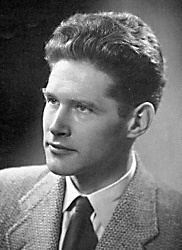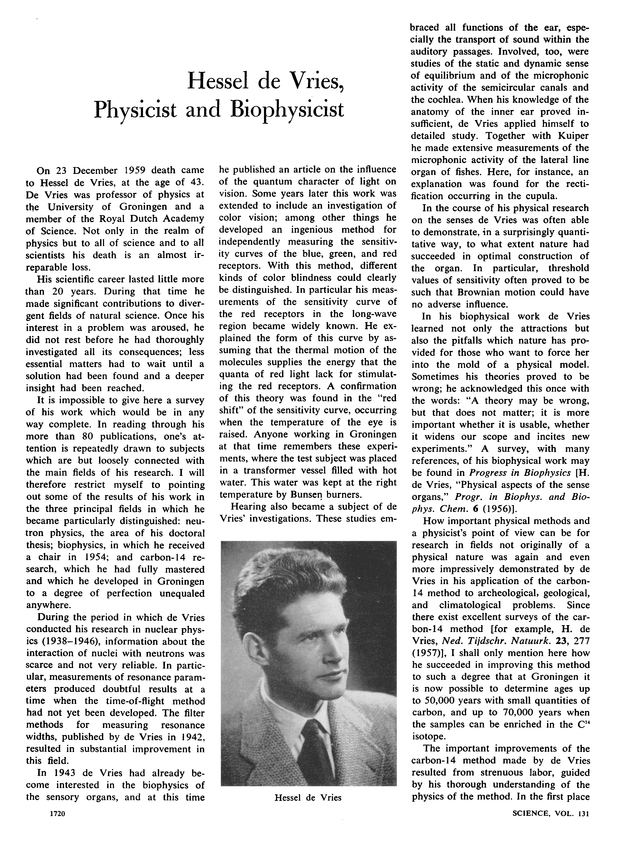Name Hessel Vries | Role Physicist | |
 | ||
Died December 23, 1959, Groningen, Netherlands | ||
Molenaar hessel de vries en ben thie op tv 1993
Hessel de Vries (November 15, 1916 in Annen – December 23, 1959 in Groningen), was a Dutch physicist and professor at the University of Groningen who furthered the detection methods and applications of radiocarbon dating to a variety of sciences. But for his untimely death, he might have been a Nobel laureate. He has been called "the unsung hero of radiocarbon dating" by Eric Willis, the first director of the radiocarbon-dating laboratory at the University of Cambridge.
Contents
- Molenaar hessel de vries en ben thie op tv 1993
- Uk64 hessel de vries
- De Vries effect
- Murder and suicide
- References

De Vries became a member of the Royal Netherlands Academy of Arts and Sciences in 1956.
Uk64 hessel de vries
De Vries effect
In 1958, de Vries showed that baffling anomalies in the carbon-14 dates, observed by Willard Frank Libby for Egyptological samples, were in fact systematic anomalies on a global scale, represented in the carbon-14 dates of tree rings. This phenomenon has been called the "de Vries effect". The correspondence with tree rings, which can be counted (one ring for each year), led to a recalibration of radiocarbon dating that was a large improvement in the accuracy.
Murder and suicide
De Vries committed suicide in 1959, after murdering a former analyst (Anneke Hoogeveen), with whom he was in love but who had become engaged to another man. But for his death, he might have shared in the 1960 Nobel Prize in Chemistry, which was awarded to Libby for his radiocarbon-dating method.
